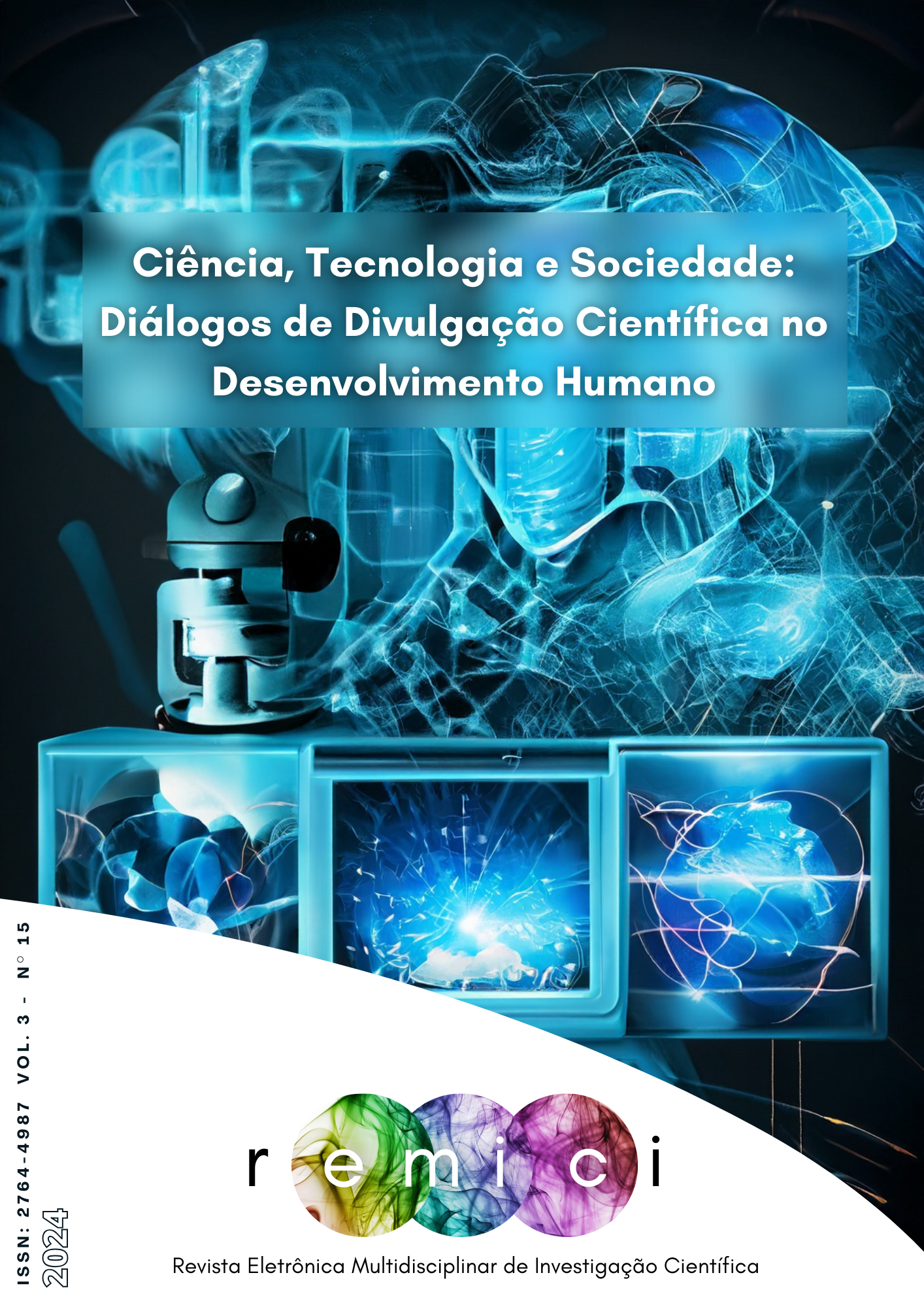EXATAS MAIS: O CANAL DO CONHECIMENTO
Main Article Content
Abstract
This work shows the use of videos through the Exatas channel most available on YouTube for pedagogical purposes, covering Chemistry content from the perspective of helping students as a complementary study. Realizing the challenges faced by students in the process of building learning in the form of remote classes, Exatas mais was created - the knowledge channel, aimed at high school students, who through investigative experiments, curiosities and solving questions from the Entrance Exam and Enem, we tried to help these students with difficulties. Given this scenario, Exatas mais aims to carry out experiments in a playful way, using alternative materials with the aim of teaching Chemistry and answering questions about the content of this subject and thus contributing to the learning of several students. Based on an online survey, via the Exatas mais channel chat, carried out with high school students, several experiments were used to create the experimental videos, with content chosen by them and posted on You Tube. Some of them were: Ice-shaped battery, Making NaCl crystal, Making silver and Producing Hydrogen gas. Through experiments, the contents were covered. We realized through interactions with students that the videos were extremely important, as through chat, they answered questions and suggested questions to be resolved with investigative experiments.
Article Details

This work is licensed under a Creative Commons Attribution-NonCommercial-ShareAlike 4.0 International License.
References
ARROIO, A.; GIORDAN, M. O Vídeo educativo: aspectos da organização do ensino. Química Nova na Escola. São Paulo. n. 24. Nov. 2006. Disponível em: https://www.researchgate.net/publication/324759123_O_video_educativo_aspectos_da_organizacao_do_ensino. Acessado em: Nov. 2023.
COSCARELLI, C.; RIBEIRO, A. E. Letramento digital: aspectos sociais e possibilidades pedagógicas. Educação do Vale dos Arinos. Belo Horizonte. n. 1. Out. 2016. Disponível em: https://doi.org/10.30681/relva.v3i1.1468. Acessado em: Out. 2023.
DUARTE, J. D.; SILVA, A. P. de P. Letramento digital: aspectos sociais e possibilidades pedagógicas. Educação do Vale dos Arinos. Belo Horizonte. n. 1. Jul. 2016. Disponível em: https://periodicos.unemat.br/index.php/relva/article/view/1468/1444. Acessado em: Out. 2023.
GIORDAN, M. Análise e reflexões sobre os artigos de educação em química e multimídia publicados entre 2005 e 2014. Química Nova na Escola. São Paulo. n. 37. Dez. 2015. Disponível em: https://www.researchgate.net/publication/289571966_Analise_e_Reflexoes_sobre_os_Artigos_ de_Educacao_em_Quimica_e_Multimidia_Publicados_entre_2005_e_2014. Acessado em: Nov. 2023.
LEITE, B. S. Discussões sobre ambientes pessoais de aprendizagem. EducaOnline. Rio de Janeiro. n.1. Jan. 2016. Disponível em: https://www.researchgate.net/publication/308021092_Discus soes_sobre_Ambientes_Pessoais_de_Aprendizagem. Acessado em: Out. 2023.
LIMA, F. H. Um método de transcrições e análise de vídeos: a evolução de uma estratégia. In: Encontro Mineiro de Educação Matemática. n. 7.2015. São João Del Rei. Anais do VII Encontro Mineiro de Educação Matemática. UFSJ. 2015.p.1-11. Disponível em: https://docplayer.com.br/15960139-Um-metodo-de-transcricoes-e-analise-de-videos-a-evolucao-de-uma-estrategia-fernando-henrique-de-lima-1.html. Acessado em: Out. 2023.
OLIVEIRA, C. B. et al. A utilização de vídeo no ensino de Química para uma aprendizagem significativa. In: Congresso Ibero-Americano sobre Educação e Tecnologia. n.6. 2009.Manaus. XIII Congresso Ibero-Americano sobre Educação e Tecnologia. UEA. 2009.p.1-10. Disponível em: https://www.academia.edu/33871279/a_utiliza%c3%87%c3%83o_de_v%c3%8ddeo_no_ensino_de_qu%c3%8dmica_para_uma_aprendizagem_significativa. Acessado em: Out. 2023.
PEREIRA, M. V.; BARROS, S. S. Análise da produção de vídeos por estudantes como uma estratégia alternativa de laboratório de física no Ensino Médio. Ensino de Física. São Paulo. n. 4. Dez. 2010. Disponível em: https://www.scielo.br/j/rbef/a/3H7WBW8X4YYqxthj4wbqcLt/?lang=pt. Acessado em: Out. 2023.
RIBAS, C. P. UHMANN, R. I. M. Aulas práticas/teóricas em ciências: uma memória reflexiva na formação docente. In: Encontro Regional de Ensino de Biologia. n. 6. 2013. Natal. V Encontro Regional de Ensino de Biologia do Nordeste. UFRN. 2013. p.20-28. Disponível em:https://www.sbenbio.org.br/geral/ix-enebio-encontro-nacional-de-ensino-de-biologia/. Acessado em: Set. 2023.
RIBEIRO, O. J. Nos bosques da educação e das novas tecnologias: um olhar para além da técnica. 2002. 206 f. Dissertação de Mestrado. Tecnologia Educacional. Universidade Federal de Santa Catarina. UFSC. Belo Horizonte. 2002. Disponível em: https://repositorio.ufsc.br/handle/123456789/83212?show=full. Acessado em: Out. 2023.
TEIXEIRA, P. M.; NETO, J. M. Uma proposta de tipologia para pesquisas de natureza interventiva. Ciência e Educação. Bauru. n. 4. Dez.2017. Disponível em: https://doi.org/10.1590/1516-731320170040013. Acessado em: Nov. 2023.

